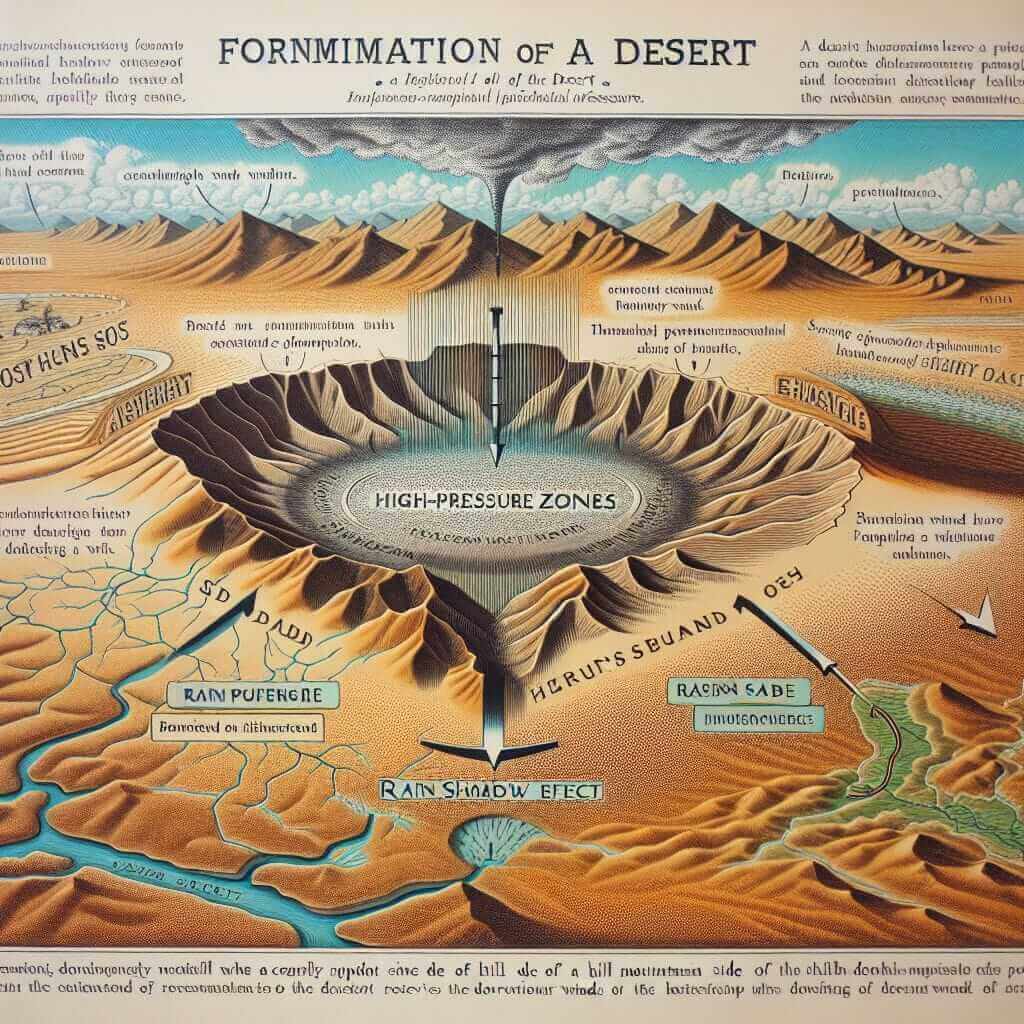The IELTS Speaking exam assesses your ability to communicate effectively in English. One way to demonstrate your proficiency is by using a wide range of vocabulary related to different topics. A topic that can appear in the IELTS Speaking test is natural geographical phenomena, with deserts being a prime example. Understanding how deserts are formed and the processes involved can equip you with relevant vocabulary to impress your examiner.
Understanding Desert Formation
Deserts are not just vast expanses of sand; they are complex environments shaped by various geographical and climatic factors. Here’s a breakdown of the key processes:
1. Atmospheric Conditions:
- High-Pressure Zones: Deserts often occur in areas of high atmospheric pressure, where the air descends, inhibiting rainfall.
- Rain Shadow Effect: When moist air rises over mountains, it cools and releases precipitation. As the air descends on the leeward side, it becomes dry, creating a rain shadow, which often leads to desert formation.
2. Low Precipitation and High Evaporation Rates:
- Aridity: Deserts receive very low rainfall, typically less than 250mm per year.
- Evaporation: High temperatures in deserts lead to rapid evaporation of any available water, further intensifying the arid conditions.
3. Wind Patterns:
- Erosion and Transportation: Strong winds in deserts play a significant role in shaping the landscape. They erode rock formations and transport sand, creating features like dunes and mesas.

Applying Desert Formation Vocabulary in IELTS Speaking
Now, let’s see how you can use this knowledge to enhance your IELTS speaking performance.
Example Question: What are some of the environmental challenges faced by people living in desert regions?
Possible Answer: “Living in deserts presents numerous challenges, primarily due to the arid conditions resulting from minimal rainfall and high evaporation rates. The scarcity of water resources makes agriculture difficult and necessitates innovative irrigation methods. Moreover, the constant wind erosion poses a threat to infrastructure and can lead to desertification, further exacerbating the harsh living conditions.”
Key Vocabulary:
- Arid conditions
- Minimal rainfall
- High evaporation rates
- Scarcity of water resources
- Wind erosion
- Desertification
Tips to Excel in IELTS Speaking
- Expand your vocabulary: Make a conscious effort to learn topic-specific words and phrases.
- Practice using new vocabulary: Incorporate these words into your daily conversations and practice speaking tests.
- Stay updated on current events: Environmental issues, including desertification, are often discussed in the media. Stay informed to showcase your awareness.
By understanding the formation of deserts and incorporating relevant vocabulary into your IELTS Speaking preparation, you’ll be better equipped to articulate your ideas effectively and achieve a higher band score.